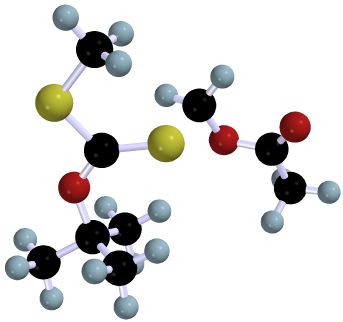
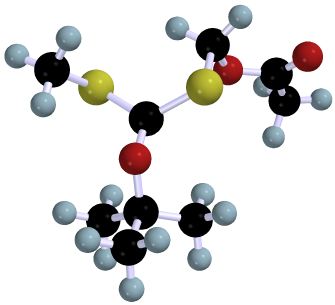
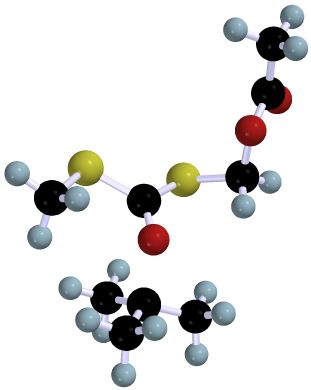
Physical and Theoretical Chemistry
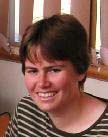 I use computer
calculations to determine the structure of molecules and to help
understand how molecules react with one another. Using the laws of
quantum mechanics, I can calculate from first principles the
structures of molecules, their vibrational frequencies and their
energies. This provides detailed information on the mechanisms of
reactions, as well as calculations of their kinetics and
thermodynamics. Much of this information is very difficult to obtain
experimentally, particularly for very reactive or hazardous
compounds. Quantum chemistry provides a viable alternative approach
for studying these compounds, and is thus an important complement to
experimental procedures.
I use computer
calculations to determine the structure of molecules and to help
understand how molecules react with one another. Using the laws of
quantum mechanics, I can calculate from first principles the
structures of molecules, their vibrational frequencies and their
energies. This provides detailed information on the mechanisms of
reactions, as well as calculations of their kinetics and
thermodynamics. Much of this information is very difficult to obtain
experimentally, particularly for very reactive or hazardous
compounds. Quantum chemistry provides a viable alternative approach
for studying these compounds, and is thus an important complement to
experimental procedures.
I was appointed to the Rita Cornforth fellowship at the end of 2003, and prior to that was working as part of Leo Radom’s group. During 2003, I have been collaborating with other members of Leo Radom’s group (now based at the University of Sydney), and also with experimental polymer groups at the University of New South Wales and the University of Southern Mississippi. Kaitlin Beare, a vacation scholar from the University of Sydney, has recently joined the group, and I look forward to expanding the group in 2004 with the appointment of a postdoctoral fellow, and with the enrolment of a new PhD student, Hugh Chaffey-Millar (jointly with the University of New South Wales).
Quantum chemistry provides a powerful tool for studying the kinetics of free-radical polymerisation, and I have played a leading role in developing this new field. In order to provide useful information for practical systems, it is important to select theoretical procedures that combine a high level of accuracy with minimal computational expense. During the last year, I have been evaluating the accuracy of computational methods for studying a host of radical reactions, and have developed a sound methodology for studying them in the larger systems that are of importance to the polymer field. Building on this work, I have recently provided a chapter on the application of quantum chemistry to free-radical polymerisation, to the new edition of the Encyclopaedia of Polymer Science and Technology (Wiley, 2004). (with M.A. Collins, R. Gomez-Balderas [U. Sydney], L. Radom, and D.J. Henry [RMIT])
Free-radical reactions occur in a range of chemical, biochemical and polymerisation processes. I have been using quantum chemistry to investigate fundamental aspects of radical reactivity in these important reactions. During 2003, I provided an explanation for why radical addition to C=S bonds occurs at the S (despite the thermodynamic preference for addition to C), and why this addition reaction is faster than addition to other types of multiple bonds (such as C=C, C=O and CC). I have also explained the unusual ordering of alkyl substituent effects in R–O bond dissociation energies. Studies of hydrogen abstraction reactions, both in prototypical systems and in case studies of importance to the polymer and biochemical fields are currently underway. (with H. Fischer (U. Zurich, Switzerland), R. Gomez-Balderas (U. Sydney), D.J. Henry, A. Pross [Ben Gurion University, Israel] and L. Radom)
The Australian-invented ‘RAFT’ procedure was developed to control the molecular weight and architecture of polymers resulting from free-radical polymerisation. I have been using quantum chemistry to build a detailed mechanistic picture of this important process with a view to designing improved RAFT agents for ‘difficult’ monomers, such as acrylonitrile. During the last year, I have provided explanations for why certain RAFT polymerisations are inhibited or retarded, and identified a previously unsuspected side-reaction in certain xanthate-mediated systems. This information is important for modelling the process and for choosing the right RAFT agent for the given application. Building on this work, and in close collaboration with the University of New South Wales, we have designed a new improved method for controlling free-radical polymerisation, which is currently being tested experimentally. In addition, I have been calculating important kinetic parameters in conventional radical polymerisation to assist in the interpretation of experimental data, and thereby develop an improved understanding of the polymerisation mechanism. (with C. Barner-Kowollik [UNSW], T. P. Davis [UNSW], C.E. Hoyle [U. Southern Mississippi], L. Radom, and P. Vana [Georg-August-Universität Göttingen, Germany])

|

|

|
Addition and fragmentation in xanthate polymerisation – a new fragmentation pathway
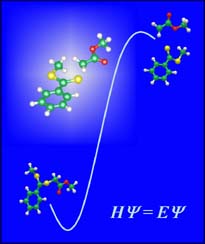
Diagram above: Provided for a cover issue of the Journal of
Polymer Science Part A. Chemistry,
highlighting the use of quantum
chemistry to study RAFT polymerisation